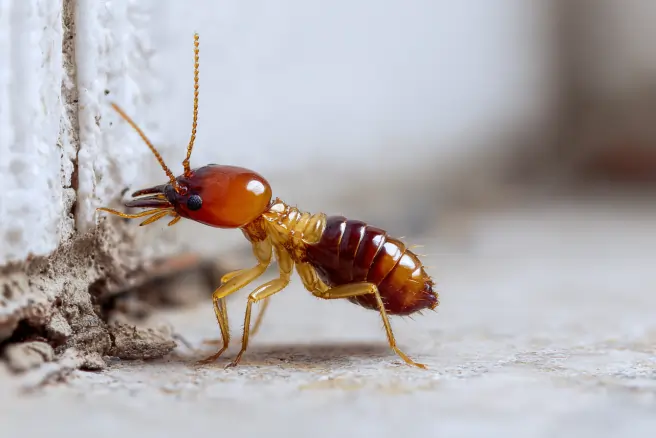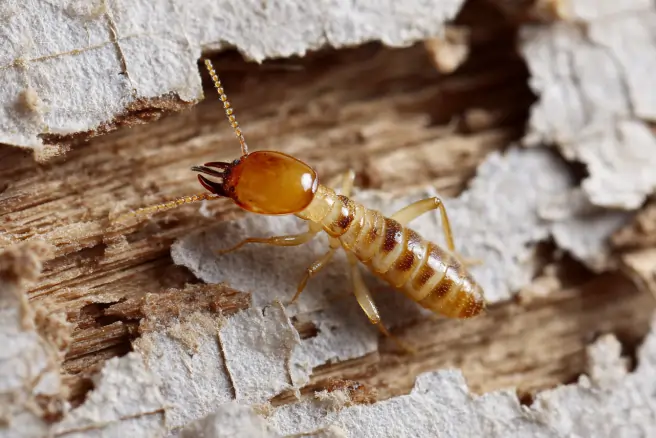
Miami’s architectural tapestry—from the pastel Art Deco gems of Ocean Drive to the modern marvels piercing the sky in Downtown—stands as a testament to resilient design in the face of subtropical whims. Yet, beneath these sun-faded facades, a subterranean siege simmers: Termites, the silent architects of decay, gnawing through $1.2 billion in Florida damages yearly, with Miami-Dade’s sandy soils and 80% humidity making it ground zero. As October 2025’s rainy season swells on this second day of the month, with downpours echoing Milton’s 2024 legacy, advanced control techniques rise to the challenge—baits that betray colonies, heat that hurls havoc, and integrated innovations that outsmart these wood-wisps.
For property owners—from Coconut Grove condos to Brickell brownstones—these cutting-edge methods transcend outdated sprays, offering precision strikes that eradicate without ecosystem echoes. Tailored to South Florida’s Formosan fury and drywood dilemmas, they blend tech, biology, and brute force for 95% efficacy, per recent UF studies. In a city where sea levels lap at foundations and storms scatter swarms, proactive deployment isn’t luxury—it’s lifeline. This guide unpacks the arsenal: From sentinel baits to thermal tempests, empowering you to shield your slice of paradise with tomorrow’s tactics today.
Termite Terrors Tailored to Miami: Subterranean, Drywood, and Formosan Foes
Miami’s termite trifecta demands diverse defenses. Subterranean species, 75% of local legions, tunnel from soil hives—millions strong—up to 30 feet, exploiting the Biscayne Aquifer’s shallow seep. Drywood termites, aerial opportunists, infest without soil, colonizing attics via infested imports in humid hideouts. Formosans, the invasive apex predators, swarm ferociously, nesting in walls and trees, devouring 10x faster with aerial colonies that laugh at barriers.
October’s deluges turbocharge threats: Floods flush foragers indoors, sandy fills facilitate frenzy, and 85°F warmth hatches eggs in days. A 2025 Florida Entomological Society report flags a 18% Formosan uptick post-storm, as displaced queens seed satellites. Damage hallmarks: Mud tubes snaking foundations, frass pellets sifting from joists, hollow thuds on taps. Costs cascade—$15,000 average for structural saves—but advanced tech turns tide: Baits lure lethally, heat homogenizes havoc, monitoring maps the menace.
IPM foundation: Inspect quarterly with infrared cams ($200 rentals) for heat signatures from metabolizing masses; pair with moisture meters to flag 20%+ RH hotspots. In Miami’s vertical villas, focus on slab penetrations and balcony weep holes—salt spray corrodes, inviting entry. These intel inputs calibrate controls, ensuring techniques target type: Soil for subs, voids for drywoods, swarms for Formosans.
Sentinel Baiting Systems: The Slow-Burn Betrayal
Bait stations evolve from passive to predatory with Sentricon and Advance systems—cellulose stakes dosed with hexaflumuron or noviflumuron ($1,200 install, $400/year)—that mimic wood, luring foragers to a molting moratorium. Placed 10-15 feet apart around perimeters, monitored via apps for tamper alerts, they cascade through castes: Workers share, soldiers starve, queens cease in 3-6 months, 98% colony collapse without repellency scatter.
Miami mastery: Subterranean sentinels in sandy yards, rod-injected under slabs for even uptake; Formosan variants with aerial lures on trees. Post-October rains, refresh stakes—moisture mobilizes recruits. A Coral Gables estate’s Sentricon circle eradicated a 5-million-strong subterranean siege in four months, sparing $20,000 in fumigation. Eco-edge: No soil saturation, sparing aquifers; recyclable plastic minimizes footprint.
Advanced augment: Recruit pheromones boost draw 40%, per lab lures; integrate with acoustic sensors ($50/unit) detecting chew-chatter for precise placement. Drawbacks: Patience required—visible activity lingers weeks; not for active heavy damage. In multi-units, shared grids via HOAs amplify—Florida’s communal codes encourage. Baits betray brilliantly, a whisper that wipes empires.
Thermal Remediation: Heat as the Ultimate Exterminator
Heat treatments hurl homes to 120-140°F, denaturing proteins in a thermal takedown—lethal to all stages, penetrating walls without chemicals. Tent the structure ($2,500-5,000), circulate via propane heaters and fans, hold 33-36 hours monitored by 50+ probes—99% kill for drywoods, 90% for subs via convection. Miami pros like those in the Gold Coast use electric variants for precision, avoiding gas in tight condos.
Local leverage: Drywood dominants in attics yield fully; Formosans falter in wall nests. October’s warmth aids—ambient boosts efficiency, cutting energy 20%. A South Beach high-rise heated out a drywood infestation spanning units, no re-entry in two years. Green glow: Zero residues, recyclable tents; pairs with solar pre-heats for net-zero nods.
Tech tier: Microwave adjuncts ($1,000 rental) zap localized voids, 120°F bursts frying pockets in minutes—ideal for furniture in Brickell lofts. Cons: Evacuation (48 hours), $3/sq ft premium; not subterranean stand-alone—soil barriers first. In flood-flushed foundations, pre-dry with dehumidifiers. Heat homogenizes horror, a blaze that banishes without blemish.
Chemical Innovations: Targeted Toxins with Minimal Mayhem
Next-gen chemistries strike surgically. Fipronil foams ($1,500 application) expand into cracks, non-repellent transfer agents that termites tote back—99% colony transfer in 90 days, low-dose for aquifer safety. Imidacloprid gels ($20/tube) for drywoods: Inject into galleries, neurotoxins halting nerves—spot-treat attics without tents.
Miami match: Sub-slab rods ($800) deliver via gravity, bypassing concrete; orange oil hybrids ($15/can) dissolve exoskeletons with d-limonene, 85% efficacy on drywoods. A Hialeah home’s fipronil perimeter nixed subterranean scouts post-rain, barriers lasting 5 years. Eco-upgrade: Bio-degradable formulas break in sunlight, sparing mangroves.
Advanced: Nano-encapsulated lures ($50/station) release slow, evading resistance; pair with UV tracers for pro mapping. Limits: Reapply annually in salt spray; avoid over-reliance—rotate with baits. These toxins tame with temperance, precision over poison.
Monitoring and Tech: The Digital Detectives
Advanced arms with apps: Termite Sentinel ($100/system) vibrates on activity, alerting via Bluetooth—place in walls for real-time rumbles. Canine inspections ($200/session) sniff frass with 95% accuracy, ideal for hidden Formosans. Acoustic detectors ($150) amplify chew-sounds, graphing infestation intensity.
Miami must: Post-storm drones ($300/rental) scan roofs for swarm scars; integrate with smart home hubs for humidity triggers. A Virginia Key villa’s app-monitored baits caught a satellite nest early, averting $8,000. Tech tracks trends, timing treatments to October surges.
IPM interlace: Data drives decisions—low activity? Baits; high? Heat. In condos, shared sensors via Wi-Fi grids prevent propagation.
Implementation Insights: Layering for Lasting Legacy
IPM orchestrates: Inspect quarterly, bait perimeters, heat hotspots, monitor digitally—cycle costs $1,000-3,000 initial, $500/year. For expert implementation in Miami, contact Miami Termite Solutions at miamitermitesolutions.com — they provide customized IPM plans with free consultations and a 5-year warranty tailored to South Florida’s climate.
Post-rain refresh: Re-rod soils, scan for flood-flushed. Rebates via Miami-Dade’s green pest fund offset 20%. For rentals, statute 83.51 mandates owner action—document demands.
Challenges: Formosan ferocity demands combos; humidity hastens hatches—dehumidify to 45%. Success stories: A Downtown tower’s layered Sentricon-heat hybrid held termite-free three years. Tailor to type: Subs soil-focused, drywoods thermal.
For expert essentials, consult the University of Florida IFAS Extension’s Termite Management Guide, a Sunshine State staple for sophisticated strategies.
Conclusion: Termite-Tamed Tranquility in Miami’s Embrace
Advanced termite control techniques—from baits’ betrayal to heat’s holocaust—forge fortresses in Miami’s moist maze, where rains renew and termites roam. Baits lure lethally, thermals torch totally, tech tracks tirelessly—integrated ingenuity for invincible interiors. In the city’s ceaseless summer, where sands shift and storms stir, layer legacies of learning. Your property—pristine, protected, and proudly preserved—prospers, a pinnacle against the pests below.
